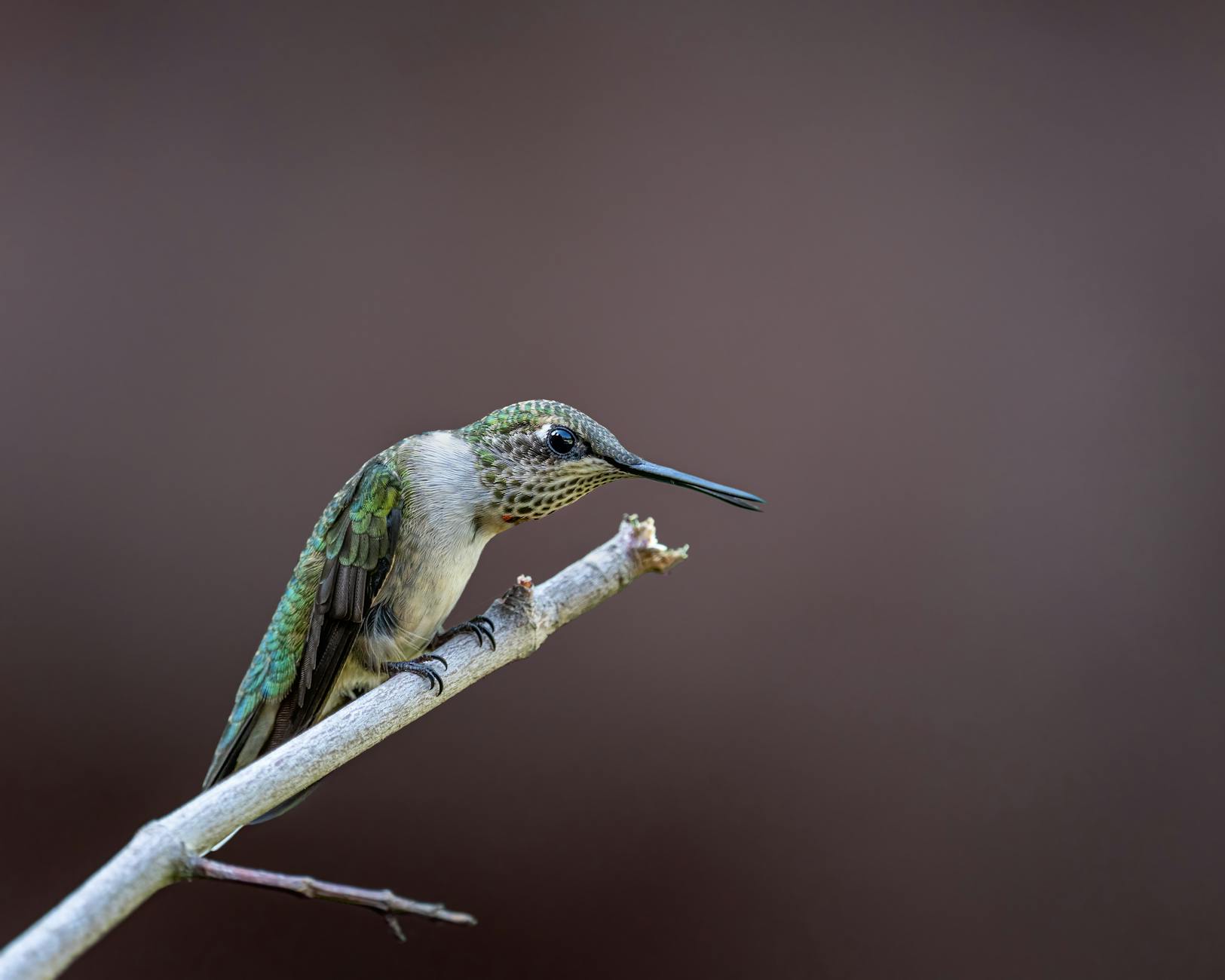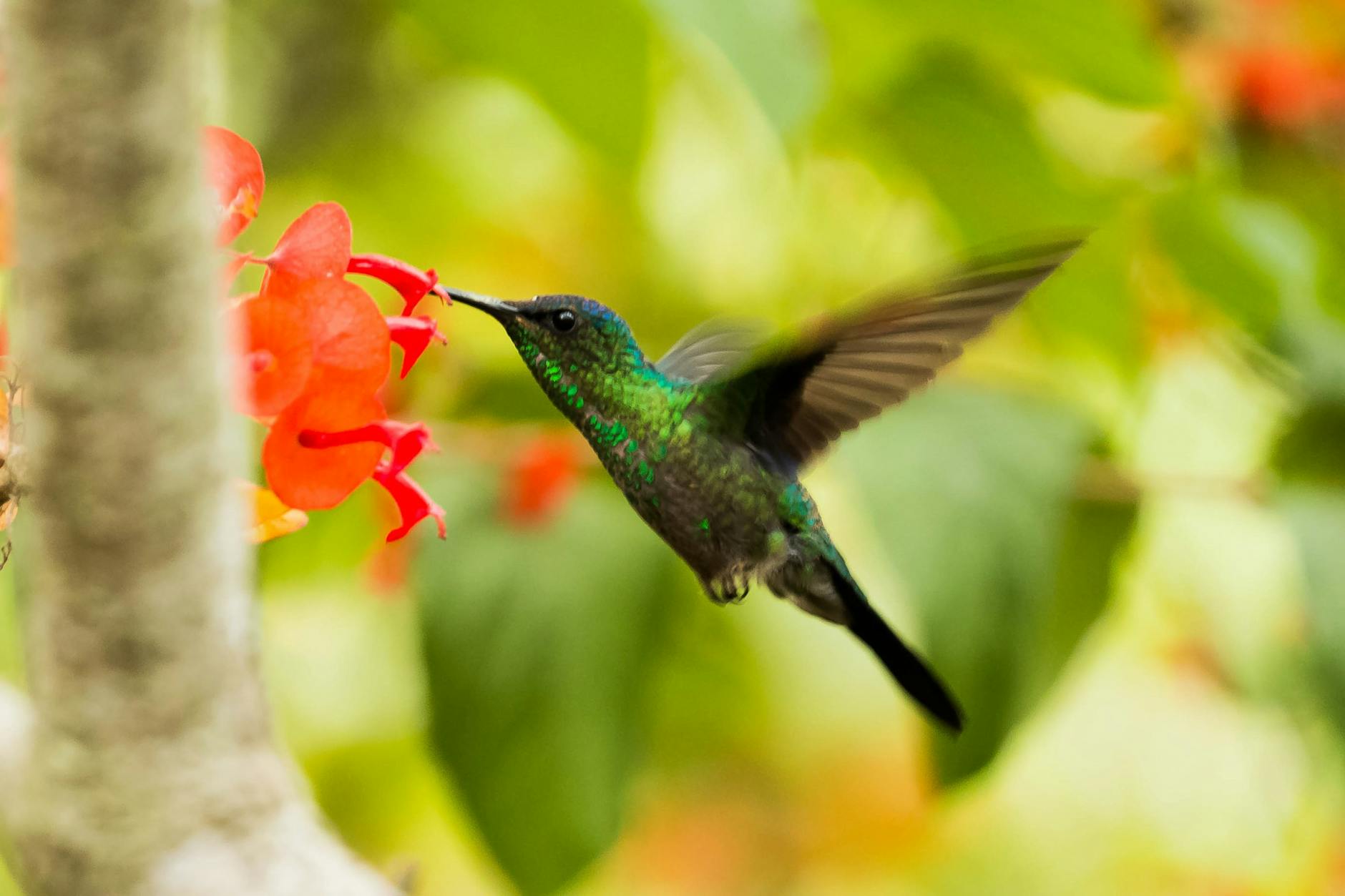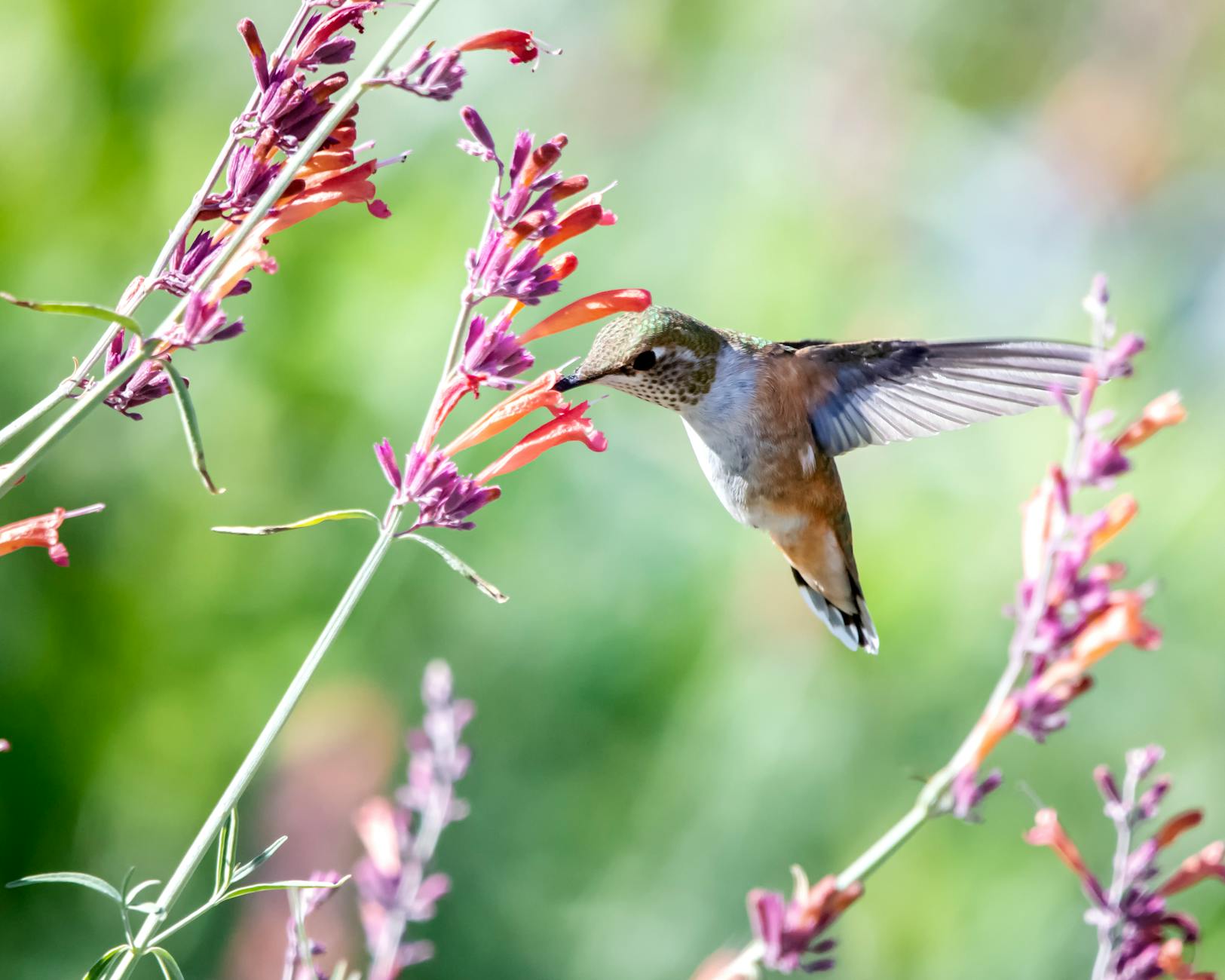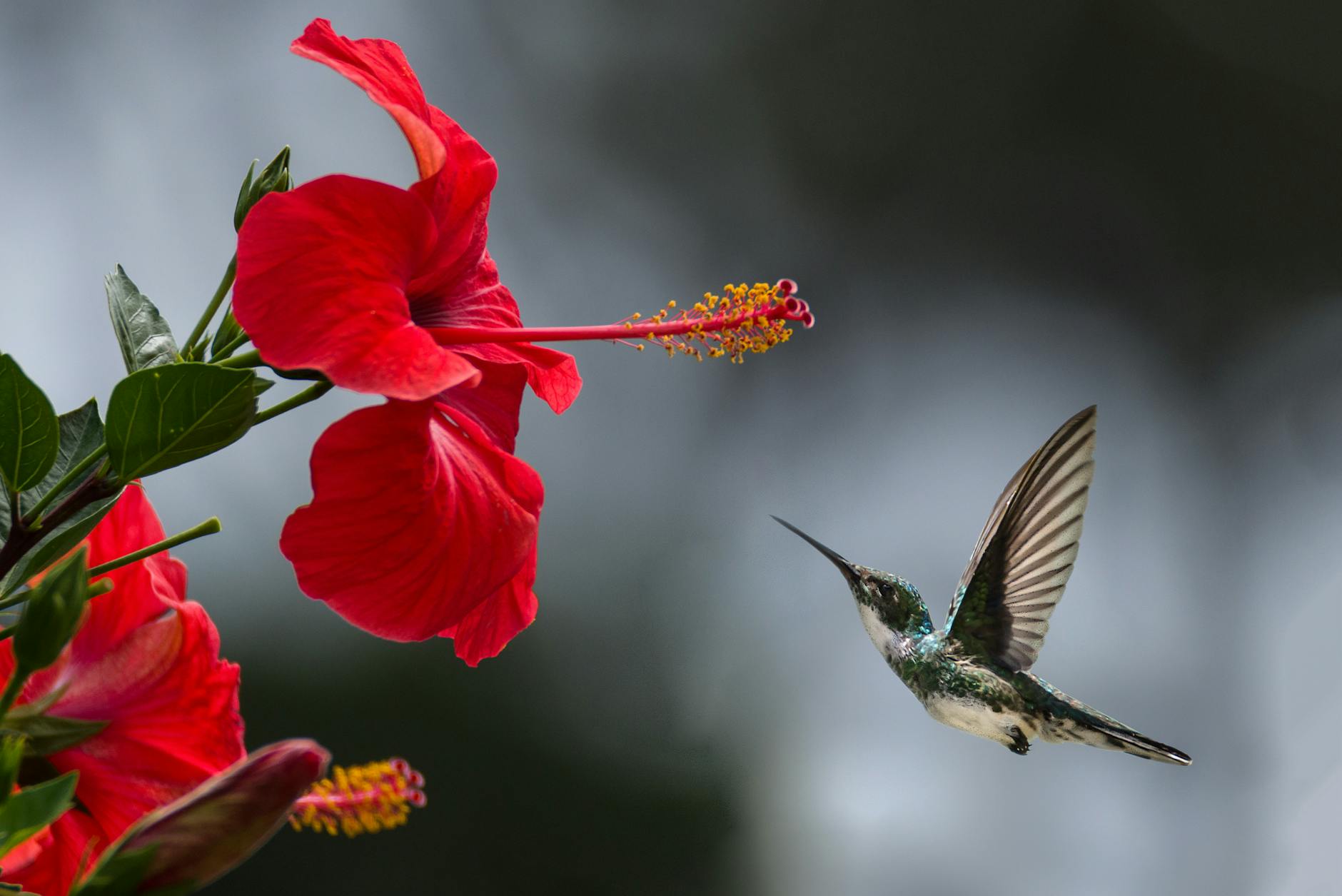Hummingbird Migration Patterns: When and Why These Birds Travel
Hummingbirds are famous for their incredible migrations, travelling thousands of miles each year. But why do they undertake this journey, and when should we expect to see them? These tiny but fascinating birds migrate primarily to avoid harsh winter conditions and to find abundant food sources.
In this post, we’ll explore the timing of their migrations, the routes they take, and the challenges they face along the way. We’ll also highlight their unique characteristics that make these birds exceptional navigators. Understanding their migration patterns gives us insight into their behaviour and helps us appreciate the remarkable resilience of nature. Join us as we uncover the intricacies of hummingbird migration and what it means for their survival.
The Basics of Hummingbird Migration
Understanding hummingbird migration is essential for appreciating these remarkable birds. Migration allows hummingbirds to escape harsh winters and find food sources. Without migration, many species would struggle to survive. The journey they take isn’t just about finding a warmer climate; it’s a critical part of their life cycle, ensuring they can breed and thrive.
Definition and Importance of Migration
Migration for hummingbirds is more than just a seasonal trek. It involves complex behaviours and physiological changes. As winter approaches, these birds prepare by increasing their body fat, which provides energy for their long flights.
Key reasons why migration is vital for hummingbirds include:
- Food Availability: During winter, flowers that provide nectar, their primary food source, diminish. By migrating, they relocate to areas with plentiful food.
- Breeding Opportunities: Migrating ensures that they can return to their breeding grounds at the right time to lay eggs and care for their young when environmental conditions are optimal.
- Avoiding Harsh Weather: Migration helps them evade extreme cold that can be detrimental to their survival.
For more information about the significance of hummingbird migration, check out this resource on Hummingbird Migration Facts.
Species That Migrate
Several hummingbird species undertake impressive migrations. The most notable include:
- Ruby-throated Hummingbird:
- This species migrates between North America and Central America, often flying non-stop across the Gulf of Mexico, covering around 500 miles in one flight.
- Their migration route primarily follows the eastern side of the United States.
- Caliope Hummingbird:
- Known for its long-distance migration, the Calliope travels over 2,000 miles from its breeding grounds in the northwestern United States to winter in Mexico.
- This species is the smallest in the U.S. and Canada, yet shows remarkable endurance.
- Black-chinned Hummingbird:
- This bird migrates from the southwestern U.S. to Mexico. Their migration is typically more local, but they are adept at navigating specific routes that include several stops along the way.
- Anna’s Hummingbird:
- Unlike many of its relatives, Anna’s hummingbird is known for its resident behaviour in California. However, some populations in the northern range will migrate south for winter.
The migration paths of these species are crucial for understanding their biological needs. For a deeper insight into the species that migrate, visit Hummingbird Migration.

Photo by Skyler Ewing
Timing of Migration
Understanding when hummingbirds migrate is crucial for both birdwatchers and nature enthusiasts. Their journey is dictated by the seasons and influenced by various environmental factors. Let’s explore these two key aspects: seasonal patterns and environmental triggers.
Seasonal Patterns
Hummingbird migration generally occurs during two main seasons: spring and autumn.
- Spring Migration: Typically begins in late January and extends until May. Hummingbirds start their journey north as temperatures begin to warm and food sources become more available. Males often arrive first to secure territories before females arrive later in the season. For instance, the Ruby-throated Hummingbird migrates to North America from Central America, with sightings reported as early as March in southern U.S. states.
- Autumn Migration: This migration starts around late summer, generally in August, and can go on until early November. As the days shorten and temperatures drop, hummingbirds prepare for their journey back south. They need to reach warmer climates before the onset of winter, and they often double their weight by consuming large amounts of nectar to fuel their extensive flights.
Understanding these patterns allows bird enthusiasts to anticipate when to place feeders and enjoy the spectacle of hummingbirds returning or leaving. For a comprehensive overview of these timings, refer to Hummingbird Migration.
Environmental Triggers
Several environmental factors play a pivotal role in deciding when hummingbirds migrate.
- Light Levels: One of the most significant triggers is the changing levels and angles of sunlight. As days shorten in the autumn, hummingbirds instinctively feel the call to migrate. In spring, increasing daylight motivates them to return north to breed.
- Temperature: Fluctuating temperatures can also influence these birds. A sudden warm spell in spring may prompt hummingbirds to begin their migration earlier than usual. Conversely, a cold snap in autumn can delay their departure south.
- Food Availability: Availability of nectar-rich flowers significantly impacts migration timing. As spring progresses, plants bloom, providing critical food sources that attract hummingbirds back to their breeding grounds. In autumn, the decline of blossoms signals to them that it’s time to leave. This connection between food availability and migration timing is essential for their survival. It’s interesting to note that climate change has altered some of these patterns, affecting when birds migrate and how they adapt to their environment. For more details on how environmental changes are impacting hummingbirds, see How Climate Change Affects Hummingbirds.
By paying attention to these seasonal patterns and environmental cues, we can better understand the remarkable journey of hummingbirds and appreciate their incredible adaptations.

Photo by Djalma Paiva Armelin
Reasons for Migration
Hummingbirds migrate for various key reasons, which are crucial to their survival. The timing of their journeys intertwines with their food sources, breeding cycles, and the need to escape harsh environmental conditions. Understanding these aspects can help us appreciate the intricacies of their behaviour and lifestyle.
Food and Feeding Needs
The search for food is one of the primary drivers of hummingbird migration. During the warmer months, these birds feast on nectar from flowers and small insects that provide essential proteins and fats. However, as winter approaches, most of these food sources diminish.
Migrating allows hummingbirds to escape areas where food becomes scarce. They move to places with plentiful blooming flowers and abundant insects. For instance, the Ruby-throated Hummingbird travels from Central America to North America, following flower cycles.
Here are some significant points:
- Nectar Availability: Many flowering plants are seasonal. Hummingbirds need to move to areas where flowers bloom at the right time, which ensures an ongoing supply of nectar.
- Feeding Strategies: They often double their weight before migration by consuming large amounts of nectar, which fuels their long flights.
- Insects for Protein: In addition to nectar, they rely on insects like aphids and spiders, which are also impacted by seasonal changes. Finding abundant insect populations is vital for their health.
For additional insights into the importance of food sources during migration, visit Hummingbird Migration Facts.

Photo by Frank Cone
Breeding and Nesting Considerations
Breeding is another vital consideration linked to migration patterns. Hummingbirds generally migrate to reach breeding grounds where environmental conditions are favourable. The timing of their return is synchronised with flowering plants that provide food for both adults and their young.
- Breeding Synchronisation: Many species begin nesting as soon as they arrive at their breeding locations. For instance, in the southern U.S., breeding often commences as early as March.
- Female Responsibilities: After courtship, females typically take the lead in constructing nests and caring for the young. They choose sites that offer protection and adequate food supplies.
The relationship between migration and breeding cycles is critical for ensuring that hummingbirds can raise their young successfully. For more details on hummingbird nesting, check out Hummingbird Nests 101.
Avoiding Harsh Weather Conditions
Harsh weather can be detrimental to hummingbird survival. Migration enables these birds to avoid the extreme cold temperatures and adverse weather conditions that can lead to food shortages and increased mortality rates.
- Temperature Changes: As temperatures plummet in the autumn, hummingbirds instinctively migrate south, where they can find more suitable conditions and food sources.
- Storms and Hurricanes: These birds are also adept at navigating around severe weather. They have strategies to ride out storms and storms typically do not deter their migration patterns.
Being in regions with milder climates allows them to thrive and helps ensure a higher survival rate. For insights into how weather impacts migration, visit Hummingbirds, Hurricanes, and Storms.
Challenges Faced During Migration
Hummingbirds face a range of challenges during their migration. These challenges can significantly impact their journey and survival. Let’s explore three major hurdles they encounter.
Predation Risks
During migration, hummingbirds become vulnerable to various predators. Their small size and energetic flying make them targets for animals that hunt in the air or wait near nectar sources. Some of the main predators include:
- Birds of Prey: Raptors like kestrels and smaller owls often catch hummingbirds mid-flight.
- Snakes and Lizards: In some regions, ground predators such as snakes may ambush them while they feed.
- Larger Birds: Aggressive species, including crows and jays, can attack and kill smaller hummingbirds.
Their agility helps them evade some threats, but the risk remains high, especially during migration stops when they are more exposed. For more details on hummingbird predation, check Which Animals Prey on Hummingbirds?.
Exhaustion and Nutritional Stress
Migrating long distances demands immense energy from hummingbirds. They rely on a nutrient-dense diet of nectar and insects to fuel their journey. Here are some challenges linked to exhaustion and nutritional stress:
- High Energy Needs: Hummingbirds have the highest metabolism of any bird. They can burn calories quickly during migration, making food availability crucial.
- Hyperphagia: Before migration, hummingbirds enter a feeding frenzy called hyperphagia. This behaviour involves consuming extra food to build fat reserves. If they fail to accumulate enough energy, they risk fatigue during their journey.
- Rest Stops: Many hummingbirds require frequent rest to recharge. Stops at feeding stations are essential for them to regain strength. However, if these locations are scarce, it can lead to exhaustion.
For further information on their energy needs, refer to Hummingbird Migration Facts and Information.
Weather and Environmental Hazards
Weather conditions significantly impact hummingbird migration. Extreme weather can hinder their ability to travel and threaten their survival. Here are a few environmental hazards they face:
- Storms: Hurricanes and thunderstorms can disrupt migration routes and force hummingbirds to seek shelter. Many individuals may not survive these conditions during their journey. For more insights, see Hummingbirds, Hurricanes, and Storms!.
- Temperature Fluctuations: Cold snaps can pose a direct threat. Although hummingbirds can tolerate some cold, extreme temperatures may force them into torpor, a state that decreases their metabolic rate significantly.
- Availability of Nectar: Harsh weather can lead to reduced flowering plants, meaning fewer food sources along their migratory path.
Understanding these challenges is crucial for appreciating the resilience of hummingbirds. Each migration season tests their endurance, agility, and adaptability in the face of various threats.
Interesting Facts About Hummingbird Migration
Hummingbird migration is a fascinating topic that reveals much about these tiny birds. Their journeys, often spanning thousands of miles, are a testament to their resilience and adaptability. Let’s explore two captivating aspects of their migration.
Remarkable Distances Covered
Hummingbirds are not just lightweight flyers; they are also impressive long-distance travellers. Some species tackle incredible distances that will leave you amazed.
- Ruby-throated Hummingbird: This species migrates approximately 500 miles non-stop across the Gulf of Mexico during its journey from Central America to North America.
- Rufous Hummingbird: This remarkable bird can cover nearly 4,000 miles from its breeding grounds in Alaska to wintering grounds in Mexico.
- Black-chinned Hummingbird: They migrate around 1,000 miles, moving between the southwestern U.S. and Mexico.
- Calliope Hummingbird: Known as one of the smallest species, it undertakes a migration journey of about 2,000 miles from the northwestern United States to Mexico.
Understanding these distances highlights the incredible endurance these birds display. The sheer scale of their travels is a significant factor for bird enthusiasts to consider when setting up feeders, ensuring they are ready for these visitors. For additional insights on distances covered, check out this link on Hummingbird Migration Facts.
Unique Navigation Skills
The remarkable navigation skills of hummingbirds are as impressive as the distances they cover. They rely on a variety of instincts and environmental cues to guide them on their journeys.
- Natural Instincts: Hummingbirds are born with an innate ability to migrate. They understand when to leave specific areas, often influenced by changes in daylight and temperature.
- Landmarks and Geography: These birds use visual landmarks, such as mountain ranges and coastlines, to navigate. This skill helps them avoid getting lost along their route.
- Magnetic Fields: Some studies suggest that hummingbirds can sense earth’s magnetic fields, assisting them in finding their way when familiar landmarks are absent.
- Memory: They have excellent memories that allow them to remember locations of food sources and safe resting spots. This capability is crucial for the long migrations they undertake each year.
By understanding these navigation skills, we gain insight into how hummingbirds manage to traverse vast distances safely. It reminds us how wonderfully adapted these birds are to their environment. For a more detailed exploration of their migratory paths and navigation, visit Hummingbird Migration.

Photo by Philippe Donn
Conclusion
Hummingbird migration is a remarkable spectacle that highlights the birds’ adaptability and survival strategies. Their journey is driven primarily by the quest for food, breeding opportunities, and the need to escape harsh weather. Understanding these patterns not only deepens our appreciation of these extraordinary creatures but also emphasises the importance of providing suitable habitats for them, especially during migration seasons.
As you witness hummingbirds return to your area, consider the challenges they face and the critical role that healthy ecosystems play in their survival. What steps can you take to create a welcoming environment for these magnificent birds in your own garden? Your actions can significantly impact their journey and future.










